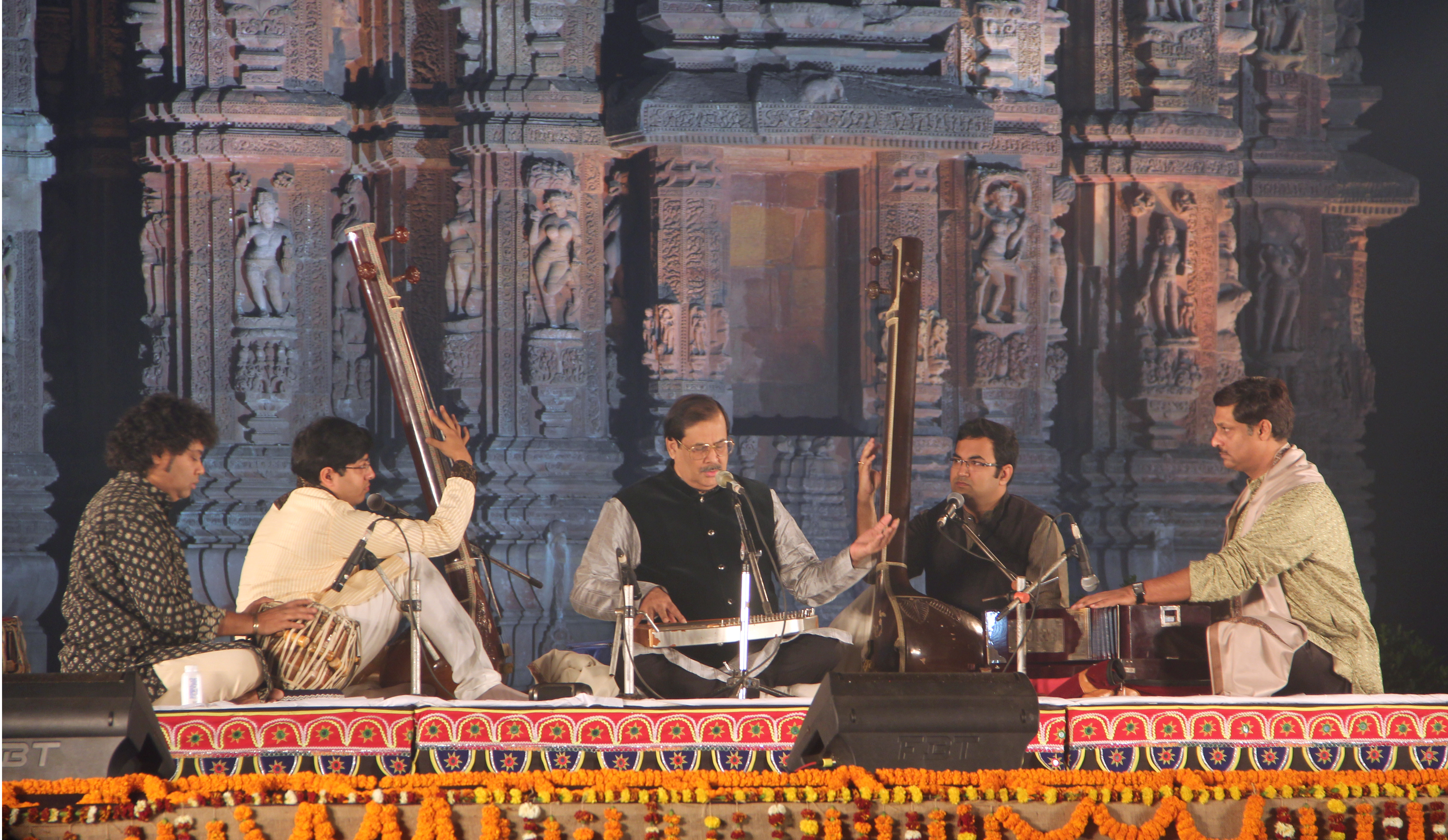|
Drut
''Drut'' ( द्रुत; also called ''drut laya'') is the concluding section, in fast tempo (or ''laya''), between 160 and 320 beats per minute, of the performance of a vocal raga in Hindustani classical music. See also *Khyal * Vilambit * Madhyalaya *Hindustani classical music Hindustani classical music is the Indian classical music, classical music of the Indian subcontinent's northern regions. It may also be called North Indian classical music or ''Uttar Bhartiya shastriya sangeet''. The term ''shastriya sangeet'' ... Hindustani music terminology {{India-music-stub ... [...More Info...] [...Related Items...] OR: [Wikipedia] [Google] [Baidu] |
Khyal
Khyal or Khayal (ख़याल / خیال) is a major form of Hindustani classical music in the Indian subcontinent. Its name comes from a Persian language, Persian/Arabic language, Arabic word meaning "imagination". Khyal is associated with romantic poetry, and allows the performer greater freedom of expression than dhrupad and is sung with the tabla instead of the pakhavaj. In khyal, ragas are extensively ornamented, and the style calls for more technical virtuosity. Etymology () is an Urdu word of Arabic origin which means "imagination, thought, ideation, meditation, reflection". Hence khyal connotes the idea of a song that is imaginative and creative in either its nature or execution. The word entered India through the medium of the Persian language, Persian language. Just as the word reflects ideas of imagination and imaginative composition, the musical form is imaginative in conception, artistic and decorative in execution and romantic in appeal.Francis Joseph Steingass� ... [...More Info...] [...Related Items...] OR: [Wikipedia] [Google] [Baidu] |
Vilambit
''Vilambit'' (Hindi: ; also called ''vilambit laya'') is an introductory slow tempo, or ''laya'', between 10 and 40 beats per minute, used in the performance of a raga in Hindustani classical music. For major ragas, the vilambit portion generally takes up two-thirds or more of the performance, and is followed by a short drut to conclude the performance. Vocalists use a slower definition of time than instrumentalists (Gottlieb 1977a:41). Vilambit is a part of 3 different kinds of Layas, (Laya Vilambit, Laya Madhyam, and Laya Drut) all of them have different speeds and can be referred to later on. See also *Khyal Khyal or Khayal (ख़याल / خیال) is a major form of Hindustani classical music in the Indian subcontinent. Its name comes from a Persian language, Persian/Arabic language, Arabic word meaning "imagination". Khyal is associated with rom ... * Madhyalaya Hindustani music terminology Formal sections in music analysis {{India-music-stub ... [...More Info...] [...Related Items...] OR: [Wikipedia] [Google] [Baidu] |
Raga
A raga ( ; , ; ) is a melodic framework for improvisation in Indian classical music akin to a musical mode, melodic mode. It is central to classical Indian music. Each raga consists of an array of melodic structures with musical motifs; and, from the perspective of the Indian tradition, the resulting music has the ability to "colour the mind" as it engages the emotions of the audience. Each raga provides the musician with a musical framework within which to improvise. Improvisation by the musician involves creating sequences of notes allowed by the raga in keeping with rules specific to the raga. Ragas range from small ragas like Bahar (raga), Bahar and Sahana (raga), Sahana that are not much more than songs to big ragas like Malkauns, Darbari and Yaman (raga), Yaman, which have great scope for improvisation and for which performances can last over an hour. Ragas may change over time, with an example being Marwa (raga), Marwa, the primary development of which has been going down ... [...More Info...] [...Related Items...] OR: [Wikipedia] [Google] [Baidu] |
Hindustani Classical Music
Hindustani classical music is the Indian classical music, classical music of the Indian subcontinent's northern regions. It may also be called North Indian classical music or ''Uttar Bhartiya shastriya sangeet''. The term ''shastriya sangeet'' literally means classical music, and is also used to refer to Indian classical music in general. It is played on instruments like the veena, sitar and sarod. It diverged in the 12th century Common Era, CE from Carnatic music, the classical tradition of Southern India. While Carnatic music largely uses compositions written in Sanskrit, Telugu language, Telugu, Kannada, Tamil language, Tamil, Malayalam, Hindustani music largely uses compositions written in Hindi, Urdu, Braj Bhasha, Braj, Awadhi language, Avadhi, Bhojpuri language, Bhojpuri, Bengali language, Bengali, Rajasthani languages, Rajasthani, Marathi language, Marathi and Punjabi language, Punjabi. Knowledge of Hindustani classical music is taught through a network of classical musi ... [...More Info...] [...Related Items...] OR: [Wikipedia] [Google] [Baidu] |
Madhyalaya
Madhya laya or Madhyalaya is a medium tempo of a rhythm in Indian classical music. Medium tempo, a speed between 80 and 160 mātrās per minute. While Madhya laya is sometimes confused with Vilambit and vice versa, it is about two beats per second. According to some scholars like Subhajit Mandal, Madhya laya is visible in three phase: Madhya + Vilambit, Madhya + Madhya, Madhya + Drut. It could be said that what is characterized as Chhanda in first felt in Madhya tempo. Chhanda can be defined as generations of a definite, repetitive line of recognizable duration that bestows a definite length on the concerned tonal phase. Madhya + Vilamvit = Known as ‘Dagur ki badhat’ consists of embellishments and chikari works. Madhaya + Madhya = Also known as ‘Madhya Jod’ or ‘Barabar ki jod’ abundantly consists of musical embellishment known as ‘Gamaka’. In ‘tata’ instruments, fretwork is on the increase in the phase. Madhya + Drut= The phase is also known as ‘Ladi ki jod ... [...More Info...] [...Related Items...] OR: [Wikipedia] [Google] [Baidu] |

